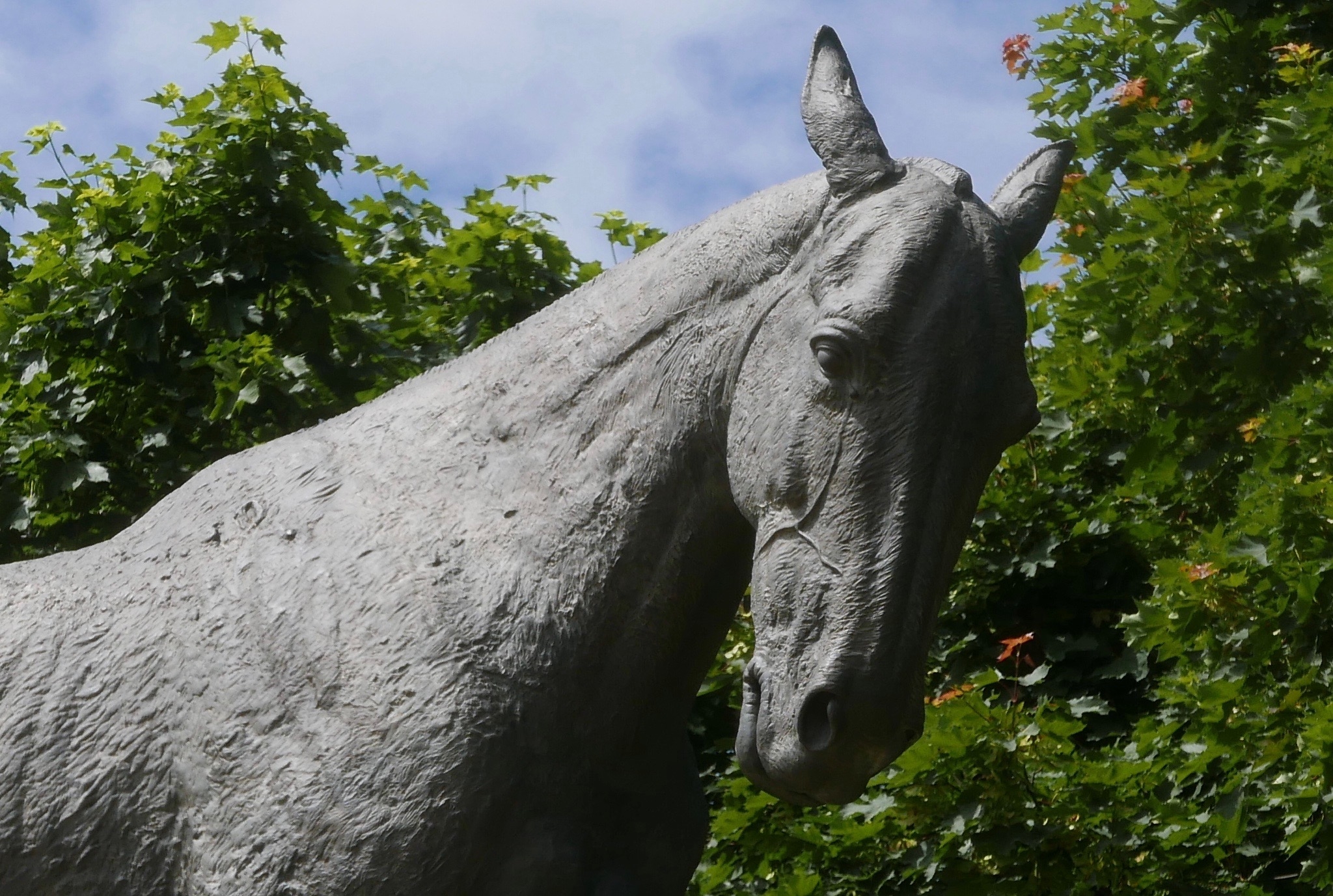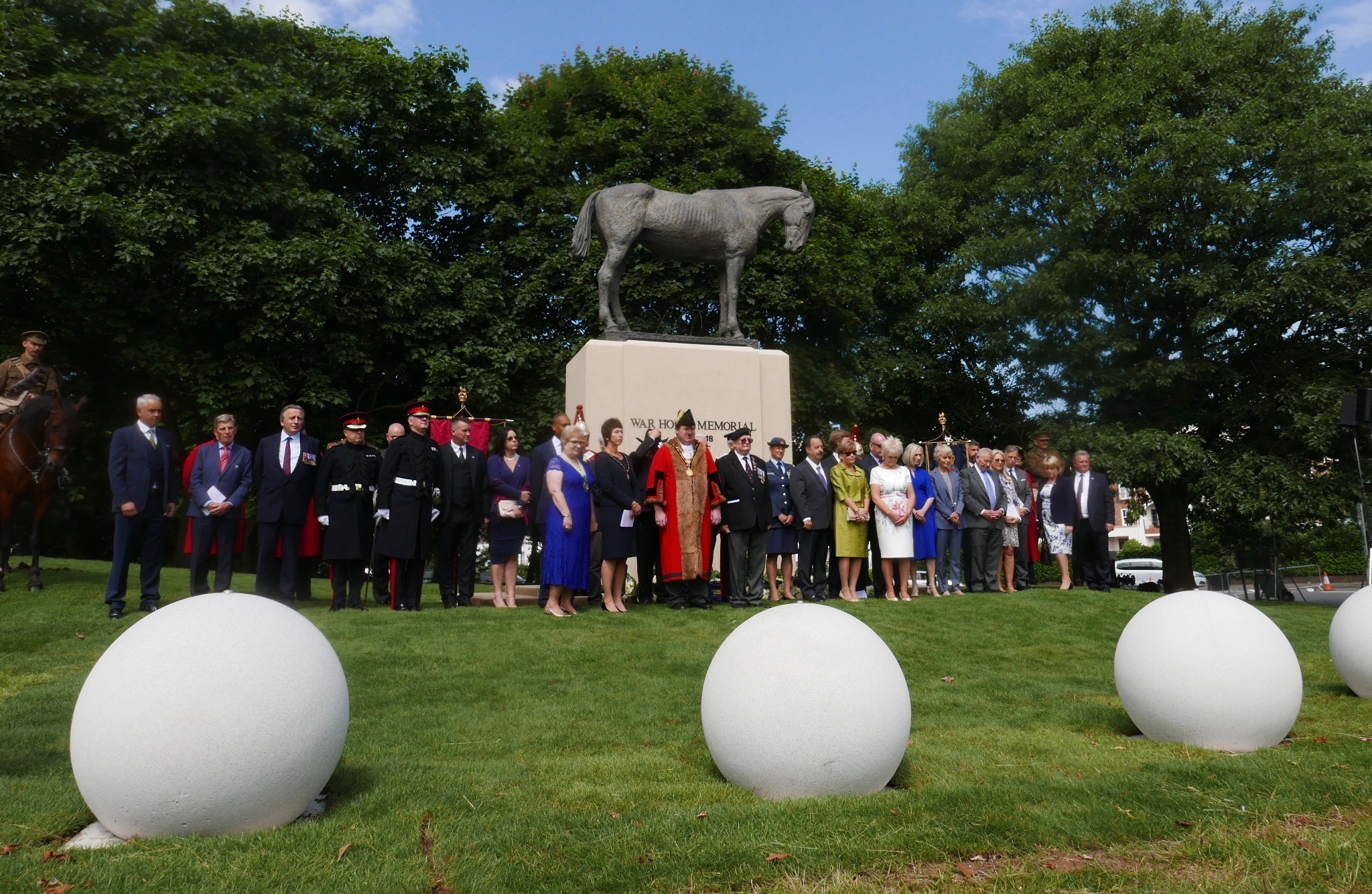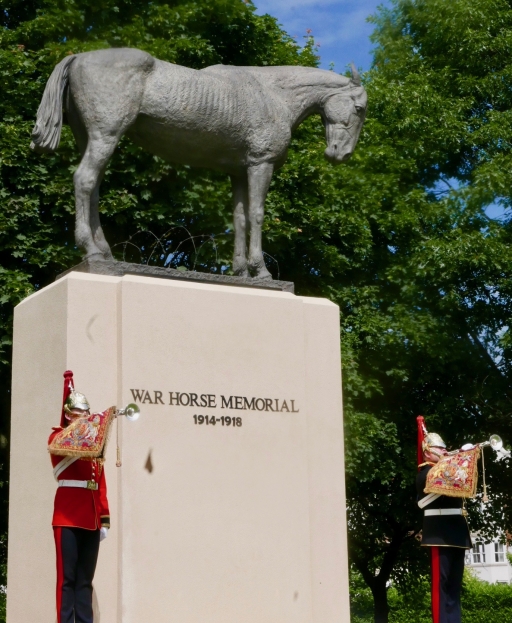The millions of horses, mules and donkeys from all sides who never returned from the First World War have been honoured with their own memorial in Britain.
Poppy the Warhorse, named in a competition by GirlGuiding UK, was unveiled today (June 8) at a ceremony in Ascot – on a site looking across to one of the country’s best known racecourses.
The larger than life bronze figure, standing on three-metre high stone plinth, is described as a ‘long overdue’ tribute to the estimated eight million horses killed in 1914-18.
Messages of support were received from Queen Elizabeth and Britain’s Prime Minister, Theresa May, whose parliamentary constituency is nearby.
The Queen wrote: “It is my sincere hope that the memorial provides an opportunity to reflect on the sacrifice made by animals during the Great War.”
In an era when motor transport was still in its infancy, and often unreliable, horsepower was vital for hauling the guns and supplies needed by the vast armies.
Figures suggest that of the one million animals requisitioned from farms, fields and stables in Britain alone, only 62,000 survived.

Sculptor Susan Leyland shares her thoughts on Poppy in a plaque at the site: ‘The ears back in memory, the head lowered in respect. A horse for all horses – the unknown warrior – a mare’ (Photo: Centenary News)
Adding to the poignancy of the new memorial is a collection of WW1 memorabilia, placed in a brass shell casing discovered on the battlefields of the Somme and laid in a sealed chamber at Poppy’s feet. It includes barbed wire from ‘No Man’s Land ‘on the Somme, shards of trench post from Ypres and a sergeant’s battlefield whistle.
There’s also an original piquet rope, donated by the Australian Light Horse Association, which would have been used to tether horses together.
Poppy’s hooves are entangled in wire. Symbolically, she wears no shoes. These have been given to the Lord Mayors of Belfast, Cardiff and London, and the Lord Provost of Edinburgh, to accept on behalf of the people of Northern Ireland, Wales, England and Scotland, reflecting the nationwide contribution to the 1914-18 war effort.

From conception to creation, The War Horse Memorial has taken more than four years to complete, with funding from both public and private donations. Poppy was created by the British sculptor, Susan Leyland, and cast by the Black Isle Bronze Foundry in Nairn, Scotland.
Alan Carr, co-founder of the project, says the monument is a long overdue tribute to the millions of horses, mules and donkeys who died in World War 1: “It will pay tribute to the nobility, courage, unyielding loyalty and immeasurable contribution these animals played in giving us the freedom of democracy we all enjoy today.”
Poppy the Warhorse is also intended to form a catalyst for a continuing fundraising campaign to support military and equine charities, principally the Household Cavalry Foundation and the Mane Chance Horse Sanctuary. This will be done through the sale of purple poppies leading up to an annual National Purple Poppy Day on August 23, to remember the service and sacrifice of horses in wars and conflict. For more details, see The Warhorse Memorial 2018 website.
 Guests gathered with organisers of the War Horse Memorial project. They included representatives of Australia, Canada, France, New Zealand and the United States. (Photo: Centenary News)
Guests gathered with organisers of the War Horse Memorial project. They included representatives of Australia, Canada, France, New Zealand and the United States. (Photo: Centenary News)
Also in Centenary News:
Featherstone War Horse honours WW1 sacrifice.
Reporting from Ascot by CN Editor
Images: Centenary News
Source: The Warhorse Memorial 2018
